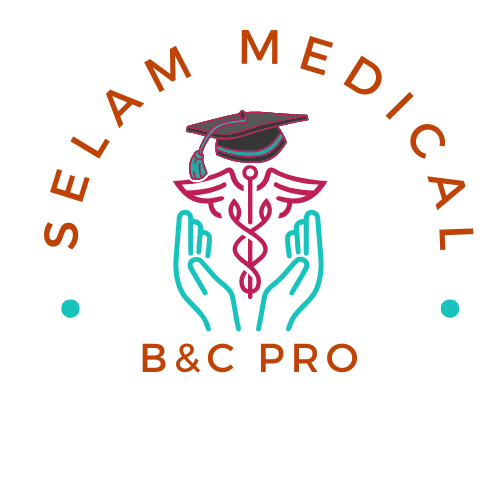Lesson Overview
Understanding medical terminology is essential for accurate coding. This lesson covers the breakdown of root words, prefixes, and suffixes used in medical coding, commonly used abbreviations, and real-world case studies demonstrating terminology in action.
1. Root Words, Prefixes, and Suffixes in Medical Coding
Medical terms are made up of three main components:
- Root words: Indicate the main part of the word.
- Prefixes: Added at the beginning to modify meaning.
- Suffixes: Added at the end to provide additional information.
A. Common Root Words
| Root Word | Meaning | Example |
|---|---|---|
| Cardi/o | Heart | Cardiomyopathy (heart disease) |
| Gastr/o | Stomach | Gastroenteritis (stomach inflammation) |
| Neur/o | Nerve | Neurology (study of nerves) |
B. Common Prefixes
| Prefix | Meaning | Example |
|---|---|---|
| Hyper- | Excessive | Hypertension (high blood pressure) |
| Hypo- | Below normal | Hypoglycemia (low blood sugar) |
| Brady- | Slow | Bradycardia (slow heartbeat) |
C. Common Suffixes
| Suffix | Meaning | Example |
|---|---|---|
| -itis | Inflammation | Arthritis (joint inflammation) |
| -ectomy | Removal | Appendectomy (removal of appendix) |
| -logy | Study of | Pathology (study of disease) |
Example Breakdown:
- Myocarditis
- Myo- (Muscle)
- Cardi- (Heart)
- -itis (Inflammation)
Definition: Inflammation of the heart muscle.
2. Medical Abbreviations in Diagnoses and Procedures
Medical billing and coding rely heavily on abbreviations to streamline documentation.
| Abbreviation | Meaning | Use Case |
|---|---|---|
| BP | Blood Pressure | Hypertension diagnosis |
| CXR | Chest X-ray | Pneumonia screening |
| DM | Diabetes Mellitus | Chronic condition coding |
Example Usage:
- EHR Note: “Pt c/o CP, hx of HTN, Rx for ASA.”
- Translation: Patient complains of chest pain, history of hypertension, prescribed aspirin.
3. Case Studies: Interpreting Real-World Medical Records
Understanding medical records is essential for accurate coding. Below is a real-world case study:
Case Study:
A 65-year-old male presents with chest pain, hypertension, and diabetes. The doctor orders a chest X-ray and ECG, diagnosing angina pectoris.
Coding Breakdown
- ICD-10 Code for Angina Pectoris: I20.9
- CPT Code for ECG: 93000
- HCPCS Code for Aspirin Prescription: J2001
Key Takeaway:
By analyzing medical records and using correct terminology, coders ensure accurate billing and reimbursement.
